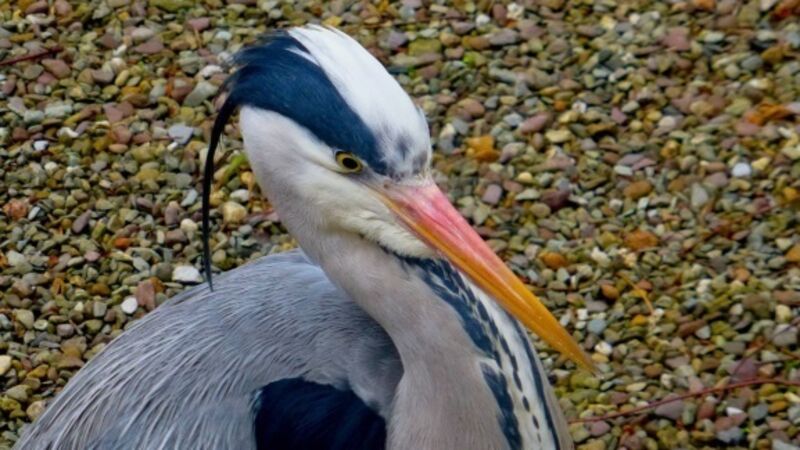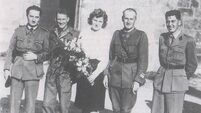Why all the ladies are smitten by our sexy, elegant boy

Spring is stirring and here in the sexy southwest, the torrid weather of this unusual winter is inspiring our domestic heron to bathe in the ice-cold pond.
The five glossy-black feathers, nine or more inches long, that rise from his crown already descend in graceful, shining curves onto his back, the feathers of which don’t look like just any old feathers but like delicate, grey shantung silk. Oh-yes, he is eye-candy indeed, and one can see how any lady heron who appreciates sheer in-your-face elegance and sartorial panache would be smitten.
Also, he has a magnificent, treetop nest site, which he guards (when he isn’t eating or bathing) for that special, persistent female that will keep approaching and will not accept rejection until, at last, he allows her to come aboard, having chased all males and other females away for days. But She-Who-Won’t-Take-No-For-An-Answer prevails upon him, one assumes, by her ardent promise and, so, she is allowed to alight and is tolerated.
Gradually, he tones down the macho, and the pair begin to love-bite shyly at one another’s feathers and to nibble sticks, thus, to reveal their shared home-making intentions. After she has done the right thing for some hours, mutual preening begins, a prelude to the reason behind all the manoeuvres — copulation short and swift, quite a balancing act on the rib-bones of an old nest 80 feet above the ground. Thus, their pact of cooperation is sealed and, for the next three months, they will act as one, each knowing its role and going about it without argument (as far as we humans, gazing up with a crick in the neck, can judge).
This morning, the groom (not a ‘man’, of course, or in any way human, other than in the instinct to procreate and dutifully do its best to rear the issue) had a bath in our garden pond. A bright and lovely morning it was, with the sun sweeping across the field beyond, and shining between the bare trunks of the trees highlighting himself, this bird, this amazing creation of nature tricked out in all the finery that nature apparently thought necessary, both to provide failsafe insulation and superb hunting skills.
The elaborate plumage is not solely for procreative display. It helps make its wearer all but undetectable when seen from below by a fish, or from the undergrowth by a mouse, a vole, a rat or very small cat, or by feathered prey, a water-bird fledgling innocently swimming past it. In any case, there he was, leisurely bathing in the clear, chill air — the sun shining through his long, stabbing beak, making it orange-red and vivid, his long, thin aigrettes hanging behind his head in a shining cascade, his silken back feathers and veil of chest feathers, white with black dashes and his jet back epaulettes —a magnificent display indeed.
Same old... same old new, as last year... or is he more striking now, in his sixth breeding season, or does one think that every year he improves? It is a great privilege to get close enough to see a wild bird in all phases of its life, from bizarre-looking fledgling to mature young adult — for he is, but yet, a youth.
He may live to be 35. I’d say he has every chance of living the maximum heron lifespan, having inveigled himself into the hearts of us, his rescuers, and those of our neighbours, Kevin and Beth Hanly, and other neighbours who will always give him a fish head or chicken bone when his main lunch-counters are closed. Because, we, their managers are temporarily and (ultimately) permanently departed. He is domestic, but not domesticated. Nobody, even ourselves, can go so close as to touch him. And that’s the way we wanted it: we were happy to feed the foundling, but wanted him to remain a wild bird.
There were 13 heron nest platforms in the woods below our house this morning; two or three may be old nests, one or two possibly extended magpie hatcheries.
I believe about 10 are set to be laid in by herons. The eggs, the size of hen’s, but longer, will number three, four or five, blue green, possibly lightly streaked in white. They will take 25 days to incubate; laid day-to-day, each will hatch in its chronological turn.
From the day they hatch, we will hear the faint, plaintive squawking of the chicks, and soon afterwards, the almost non-stop, plaintive begging. The chicks look lovely at first, then thin, tall, gawky and bizarre. But their parents will cherish them. Some chicks will be better fed than others. I believe I know whose.









